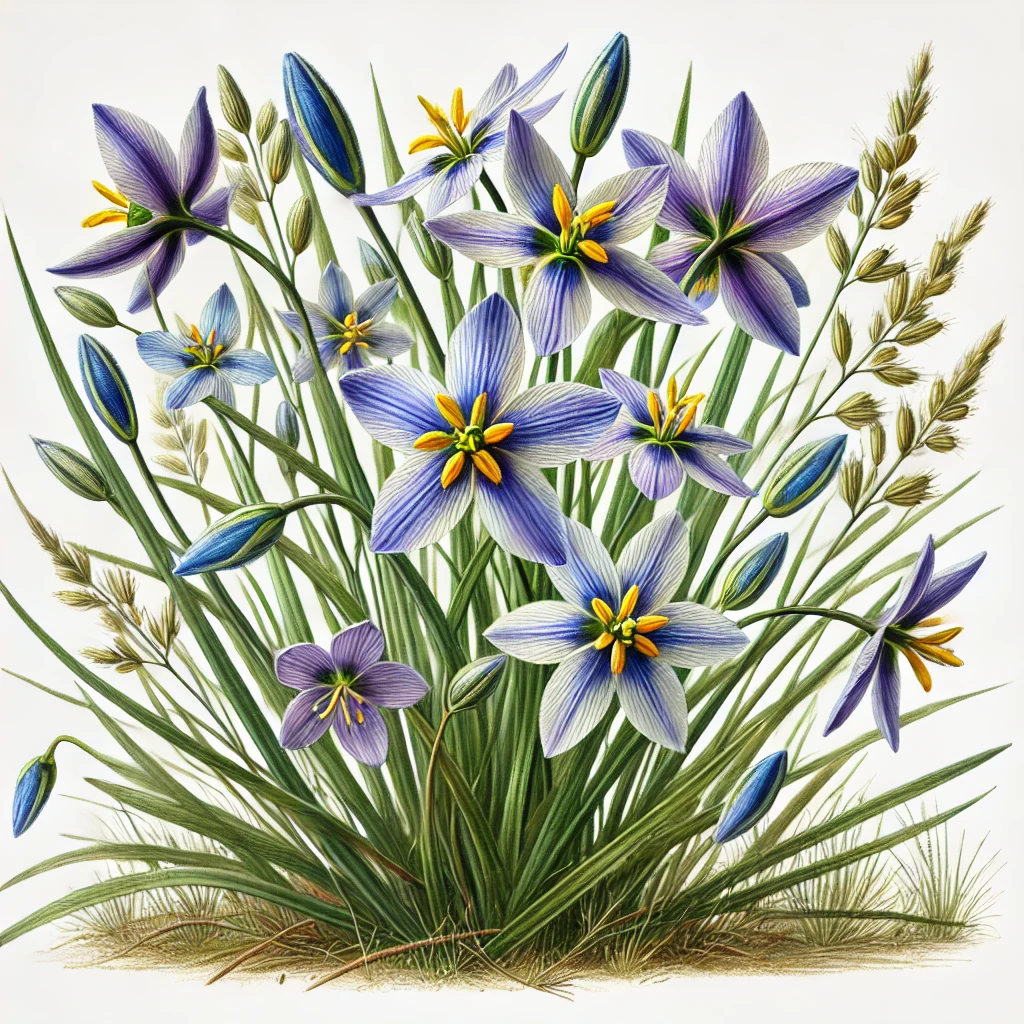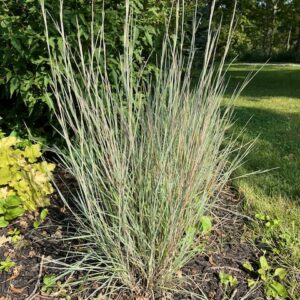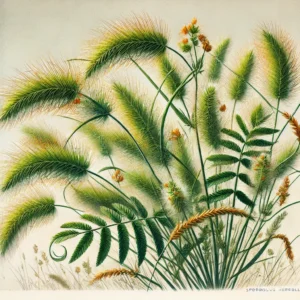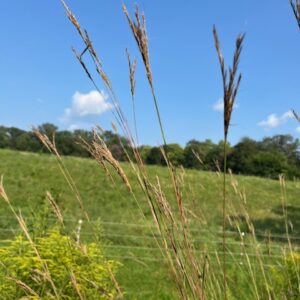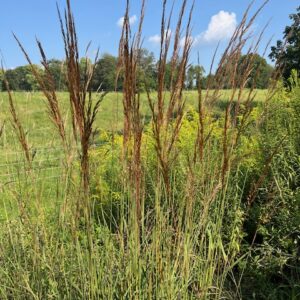Prairie Blue-Eyed Grass (Sisyrinchium campestre) – A Delicate Wildflower of the Grasslands
Prairie Blue-Eyed Grass is a small, perennial wildflower that belongs to the iris family (Iridaceae), despite its grass-like appearance. It produces delicate, star-shaped blue to violet flowers with a bright yellow center, adding a subtle beauty to prairies, meadows, and open woodlands. This plant thrives in dry, well-drained soils and is a valuable nectar source for native pollinators.
Flowers: Small, star-shaped flowers (about ½ to ¾ inch across). Pale blue to deep violet petals with a bright yellow center. Flowers are arranged in loose clusters at the tip of slender stems. Blooms from late spring to early summer.
Height & Spread: Grows 8 to 18 inches tall, forming dense, grass-like clumps. Spreads slowly through rhizomes, but is not aggressive.
Leaves: Narrow, grass-like green leaves, typically less than ¼ inch wide. Leaves grow in tufts from the base and resemble true grasses.
Stem & Growth Habit: Slender, unbranched stems, topped with clusters of flowers. Clump-forming but remains compact.
Roots: Fibrous root system, allowing it to thrive in dry, rocky, or sandy soils.
Habitat & Range: Native to prairies, meadows, roadsides, and open woodlands in central and eastern North America. Prefers well-drained, dry to medium soil in full sun to light shade. Found in tallgrass and mixed-grass prairie ecosystems.
Pollinators & Wildlife: Attracts native bees and small butterflies, providing an early-season nectar source. Deer and rabbits generally avoid it due to its fibrous texture.
Not a True Grass: Although its thin, blade-like leaves resemble grasses, Prairie Blue-Eyed Grass is actually part of the iris family.
Short-Lived Blooms, But Continuous Flowering: Individual flowers last only a day, but the plant produces new blooms continuously for several weeks.
Hardy and Adaptable: Thrives in poor, dry soils where many other wildflowers struggle. Commonly found in prairie restorations and native landscaping projects.
Growing Prairie Blue-Eyed Grass: Best for prairie gardens, rock gardens, and naturalized meadows. Thrives in full sun and prefers dry, well-drained soil. Drought-tolerant once established, needing minimal watering. Non-aggressive, forming small, slow-spreading clumps. Deer- and rabbit-resistant due to its tough, fibrous leaves.

